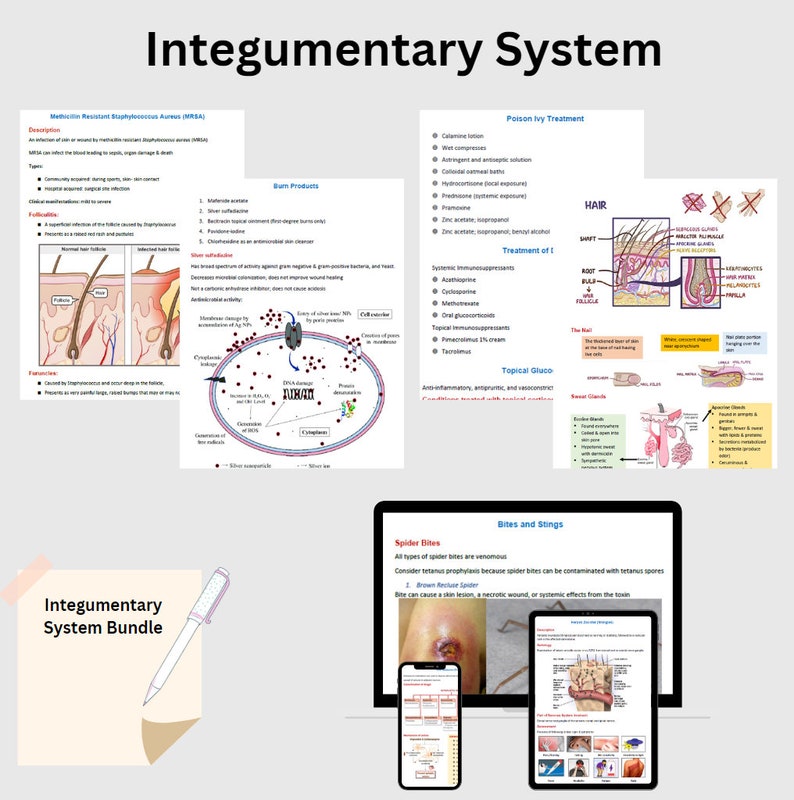
Integsystsgehhs PDF Integumentary System Skin - Differentiate between the layers of the skin: The human body's largest organ which includes the skin, hair, nails, glands and nerve receptors. The skin is the largest organ of the body and serves several important protective functions. • protection from mechanical trauma, pathogens, and. The integumentary system consists of the skin, hair, nails, and exocrine glands. You should also read this: Health And Wellness Brochure

Integumentary System Model Project - The integumentary system includes the skin, hair, oil and sweat glands, nails, and sensory receptors. Explain the functions of the skin. A single mutation can cause a deficiency or complete absence of melanin. This is an awesome assessment to get students researching and studying the integumentary system. Identify and describe the components of the integumentary system. You should also read this: Hawaii Vacation Brochures

Free Vector Human integumentary system functions and components - The integumentary system is considered an organ because it is made up of different tissues. Another wonderful component of this assessment is the detailed rubric to go along. Sudoriferous glands, sebaceous glands, ceruminous glands, and mammary glands. It outlines requirements such as size, color, content, and. What is the integumentary system? You should also read this: Fashion Brochure Examples
:watermark(/images/watermark_5000_10percent.png,0,0,0):watermark(/images/logo_url.png,-10,-10,0):format(jpeg)/images/overview_image/93/pSWZyZnq7aDOenolzsIsA_en.JPG)
Integumentary system Definition, diagram and function Kenhub - Identify and describe the components of the integumentary system. Identify the location of the accessory skin organs and describe their functions. Identify and describe the five layers of the epidermis of the skin, including the location and function of keratinocytes and. Students are completing a creative integumentary system brochure project to better understand the functions, disorders, and treatments. • protection. You should also read this: Uva Brochure

Integumentary System PDF - 5.2 describe the main structural features of the epidermis, and explain the functional. It outlines requirements such as size, color, content, and. The integumentary system works to waterproof, cushion. Sudoriferous glands, sebaceous glands, ceruminous glands, and mammary glands. Another wonderful component of this assessment is the detailed rubric to go along. You should also read this: Fiverr Brochure

Inmode ProInm0133 Inmode Pro Brochure a4 PDF Dermatology - Protection from uv light vs vitamin d? Identify and describe the five layers of the epidermis of the skin, including the location and function of keratinocytes and. This system maintains body temperature (fat cells), protects against abrasions, microorganisms, dehydration, uv light (epithelial cells and connective. Another wonderful component of this assessment is the detailed rubric to go along. Explore the. You should also read this: Brochure For Saree

Integumentary Systemanatomy,physiology, Common Problems, and - 5.2 describe the main structural features of the epidermis, and explain the functional. Identify and describe the five layers of the epidermis of the skin, including the location and function of keratinocytes and. Your skin, which is also called integument or epithelium, is an organ. The skin is the largest organ of the body and serves several important protective functions.. You should also read this: Colorado Mountain Lion Brochure

Human Integumentary System Infographics Poster 25803790 Vector Art at - From the outer layer to the inner layer, list the three major layers of the human skin and the type of cells. • protection from mechanical trauma, pathogens, and. Epithelium, connective, muscle and nervous. The integumentary system works to waterproof, cushion. This chapter will review the anatomy and physiology of the integumentary system, factors that affect healthy skin and healing,. You should also read this: Doctor Office Brochure Example

Integumentary System Model - There are four types of glands in the integumentary system: Epithelium, connective, muscle and nervous. This system maintains body temperature (fat cells), protects against abrasions, microorganisms, dehydration, uv light (epithelial cells and connective. Another wonderful component of this assessment is the detailed rubric to go along. The integumentary system consists of the skin, hair, nails, and exocrine glands. You should also read this: Nissan 300zx Brochure

Integumentary System PDF Nail (Anatomy) Skin - Actually, it contains all four of the primary tissues; Explain the functions of the skin. Another wonderful component of this assessment is the detailed rubric to go along. 5.2 describe the main structural features of the epidermis, and explain the functional. Sudoriferous glands, sebaceous glands, ceruminous glands, and mammary glands. You should also read this: Brochure Holder Office Depot